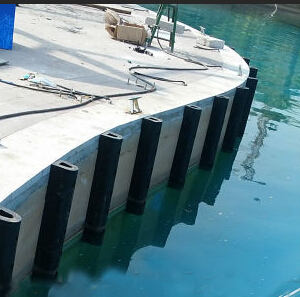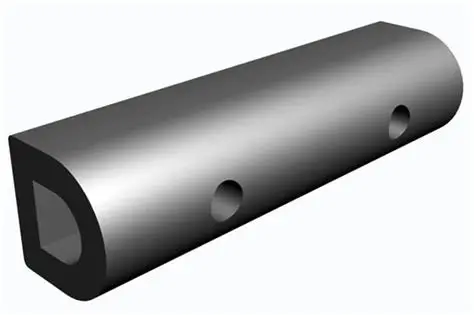
D and Wing-D fenders are often used as side beltings to protect the vessel during escort duties and when coming alongside.
D rubber fenders are used to protect ships, docks, and quay walls by absorbing impact energy during berthing. They are commonly installed on the sides of vessels, wharves, and piers, with a flat back that makes installation easy via bolts or fixing strips.
Applications
- Marine docks and piers: To protect fixed structures from the movement of ships.
- Ship hulls: On the sides of vessels, especially tugboats, workboats, and pilot boats, to prevent damage as they maneuver.
- Loading bays: As a protective barrier for trucks and other vehicles in loading areas.
- Inland waterways: Used on pontoons, floating bridges, and in locks for general protection.
Installation examples
- On a dock wall: A continuous strip of D-fenders is bolted vertically along the edge of the quay to protect against large vessels.
- On a ship hull: D-fenders are attached to the sides of a workboat to protect the hull from impacts with other vessels or structures.
- As a continuous strip: D-fenders are mounted horizontally as belting on the side of a tugboat.
Visual characteristics
- Shape: The fenders have a D-shaped cross-section.
- Backside: They have a flat, solid back for easy mounting.
- Hollow core: Many types have a hollow chamber inside to increase energy absorption and deflection, while others are made of solid rubber for heavy-duty applications.


